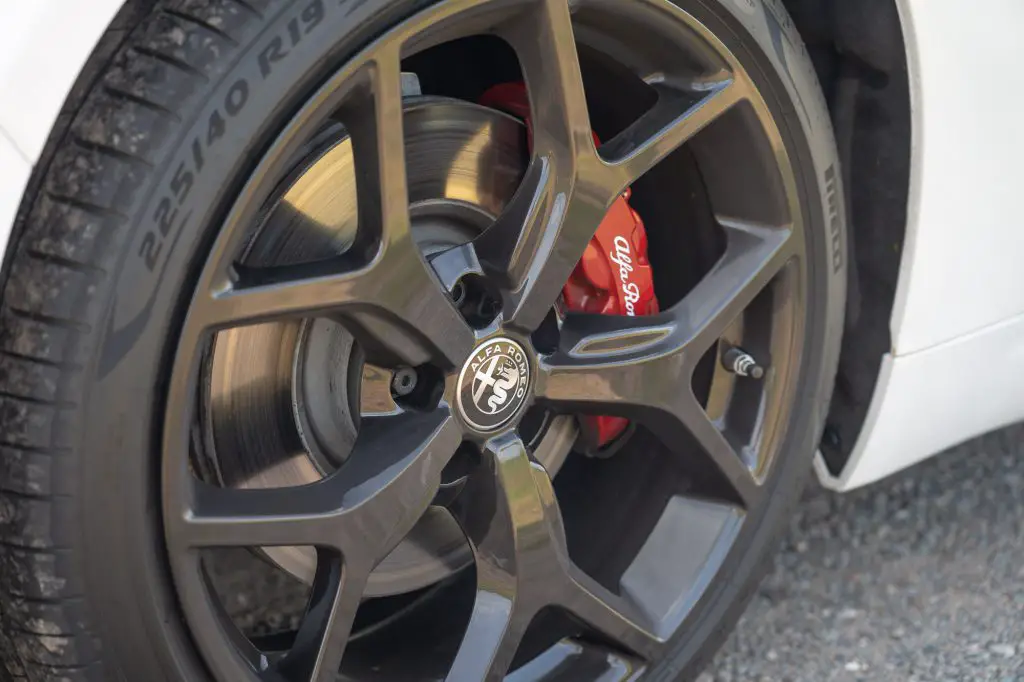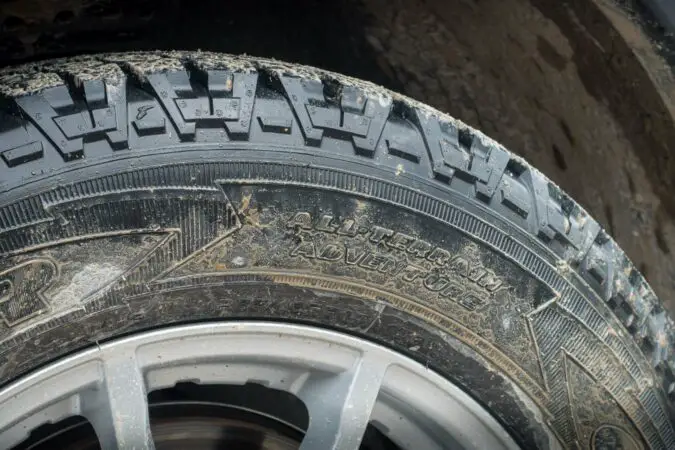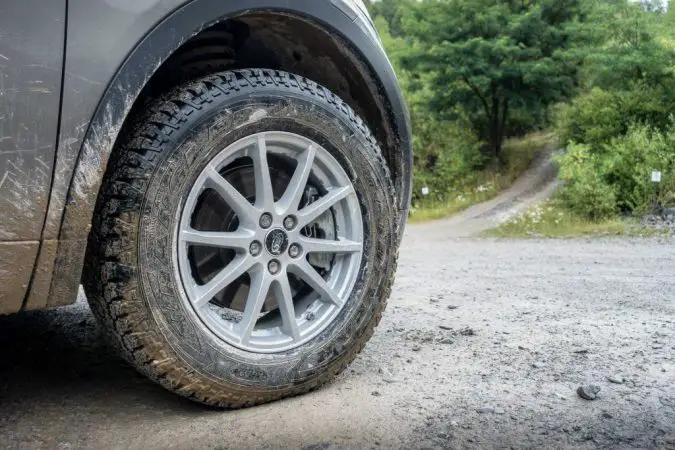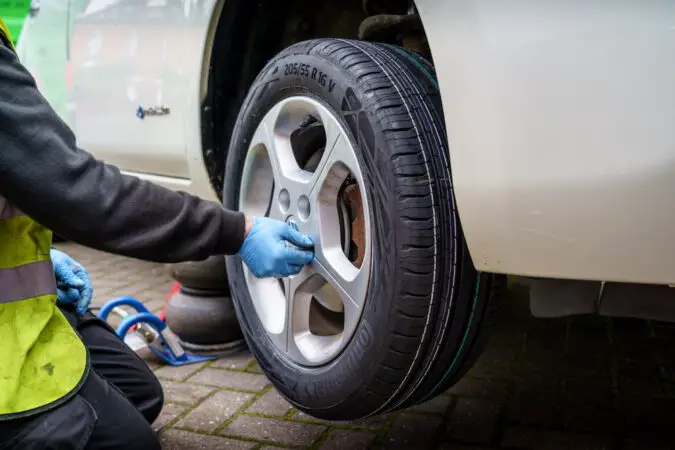A vehicle’s camber angle is used to describe its wheel placement. It is the angle you can between the vertical axis when observed from the rear or front of your vehicle and it is useful in designing the suspension and steering of a car. A camber can either be negative or positive based on the angle it takes.
If the wheel’s top is further out than its bottom, tilting it away slightly from the axle, we call that a positive camber. Conversely, if the wheel’s bottom is further out than its top, that is what is referred to as negative camber. And as a combination of both, when the wheel seems to be vertical from both the top and bottom, that’s a neutral camber.
Camber can affect the performance of your vehicle so it’s important to know more about them. You can adjust the camber to your preference as well. All that and more will be discussed in this guide to camber.
What Is Camber?
Camber is used to define the angle of the tire and wheel relative to a completely flat surface. The wheels’ tops can lean either away from or towards the center of the car when seen from the rear. The perfect camber equalizes tire wear and tire traction, and thus is different for every car based on road conditions, how it’s driven, grip level in the tires, suspension type, and type of car.
Camber also adjusts the contact patch – the area where the tire comes in contact with the ground. This affects grip. We measure camber angle when the vehicle is static, as camber changes naturally when the vehicle is cornering or turning because of the body roll. Camber gain is the amount this camber shifts when moving, and it depends on the kind of suspension.
Tires at neutral or zero camber have the biggest contact patch along with the most grip in a straight line. The size of the contact patch is changed by body roll as the tire and car lean, which decreases the lateral grip of a tire. Zero camber produces the most uniform wear of tires over time but it may also decrease performance when cornering. The perfect camber setting is the vehicle-, driving style-, and driving condition-specific.
According to this theory, almost all vehicles are made to have a little camber, as having static camber also means having zero camber during some turns.
Camber Vs Caster Vs Toe
A vehicle’s suspension is measured in 3 different ways on unique axes. All of these are interdependent, so changing even the angle would warrant examining the components of the suspension.
Caster calculates the steering axis’ angle or the place of the pivot point in comparison to the upper pivot point. When moving in a straight line, your vehicle’s steering ease is affected by the angle.
With a positive caster, the wheel of the car is in front of the upper pivot point whereas it is behind the point for the negative caster.
Toe is used to define the position of the front tires if a car is observed from above. The leading edges of the tires can be turned towards the core of the car, giving it a “pigeon-toed” appearance. That’s called toe-in. This enhances stability when at speed in a straight line. When the tires point outward, this improves turning response and it is termed “toe-out.”
Of course, camber affects the handling of vehicles as well as tire wear. Most cars feature a bit of negative camber, but positive camber can be found in some cases.
Pros And Cons
When considering negative camber, there are a handful of positives and negatives you must keep in mind. If your vehicle does not have negative camber as a part of the design element and you are considering adding it, here’s what to keep in mind:
Pros Of Negative Camber
Pros Of Negative Camber: Improves Handling Of Vehicle
A vehicle that is equipped with negative camber will offer improved handling as the tire lies perpendicular to the surface as the car moves. Thanks to this design, the contact patch is loaded evenly. Without it, the tire would naturally load on the exterior portion of it, producing less grip for driving in potentially complex situations.
Pros Of Negative Camber: Reduces Wheel Vibrations
If the tires and wheels are perfectly aligned with your vehicle’s vertical axis, any cornering attempts you make would make the front contact patches lift off the ground. Due to this, smoothness would reduce in each turn, creating a vibration effect somewhat similar to what you would experience when the brakes are close to failing.
This sort of impact can be so severe for some vehicles that drivers could experience shuddering throughout their steering wheel. Now you know why most high-performance vehicles racing on tracks have a negative camber design element on the front wheels.
Pros Of Negative Camber: Allows To Corner With Extra Speed
Aggressive drivers, negative camber can help protect you from possible mishaps. A negative camber of one degree or less can assist you in making corners with higher efficiency without facing the straight-away problems that could happen due to a more severe angle. You will get an additional grip going out of and coming into every corner which will allow you to move faster without cutting stability.
When you handle each corner or curve in the right way, it is possible to extend the service life of your tires as all the pressure isn’t applied to one specific spot.
Cons Of A Negative Camber
Cons Of A Negative Camber: Decreases Straight-Line Braking And Acceleration
Negative camber gives you more control over the corners you make. What you will be missing out on, however, is an optimized process of straight-line braking or during acceleration. Your car will need to exert itself more to increase speed due to the tire angle.
The standard car needs to have a healthy balance to enhance performance in this segment. This is why most owners should try to keep their negative camber under 3°.
Cons Of A Negative Camber: Wears Out Tires Prematurely
Negative camber does increase stability and traction but you are also going to be noticing premature wear and tear on your tires. The angle, although creates extra contact space, reduces additional grip with time, particularly when cornering. That means your tire life is impacted negatively. Based on how you drive, you may observe up to a 20% decrease in performance after adopting this setup.
Cons Of A Negative Camber: Wheels Can Breaks Loose Easier
If you choose a negative camber, the tires can break loose easier from your general driving habits. This coupled with premature wear and tear is a common issue with some models and makes. You should remember that any level of camber (counting drivers who prefer running a positive angle) creates a problem where inner tire wear is more than usual.
Cons Of A Negative Camber: Lesser Stability In Straight-Line Driving
Straight-line driving’s stability is negatively affected by a negative camber. The point of running a negative camber, on the front, back, or both, is to have increased stability during driving on circuits where you have to turn more. When drivers move straightway in a race, or you go along a highway in your car, the instability will be increasingly visible.
Street vehicles need as little as a degree of negative camber to display these issues.
Cons Of A Negative Camber: Places Less Tire Space On Surfaces
For vehicles running with a huge negative camber, drivers will not be able to take advantage of the wheel’s whole width. On straight sections, the tire will be off the road more than it will be on it. Increasing a few inches may improve vehicle handling, but it may also affect how the frame of the vehicle interacts with the tires.
Many modern passenger cars are constructed to run with a neutral camber. If you chose negative cambers, the tires might rub and thus, increase damage on the tires.
Cons Of A Negative Camber: Might Lock Your Steering
Maybe you got lucky and are not facing the rubbing problem with your tires when your vehicle is running with a lot of negative camber. Even then there is a risk that the steering could lock up. As a result of this setup, a severe angle will be created which makes the tires collide with the car’s frame when making sharp turns.
This drastically decreases the options you have if there is a need to make an emergency turn, whether you are driving to the grocery store or passing your opponent in a race. Some vehicles need a negative camber of at least 5° for this issue to start but other cars can experience it with under 2°.
Cons Of A Negative Camber: Traction Is Reduced In Wet Conditions
If you are choosing to operate with a negative camber, you are assuming that the track or streets will be dry. Using this setup on a vehicle’s front will make you lose almost the whole front-end traction. If your car is a rear-wheel drive, then equipping that on the rear can create a similar effect.
This is why vehicles with negative cambers are usually running in hot and dry climates. The cornering is improved in these situations without having to fear a little rain ruining performance.
Cons Of A Negative Camber: Brakes Can Lock Up
For vehicles operating with a negative camber, chances are, the angles can make the brakes lock up on a few setups. This happens due to the procedure needed to start a stopping routine. The angle change can stop the vehicle from performing as it would be failing to engage or locking the braking mechanism as designed.
The only way you can get around this disadvantage is by playing around with a bunch of setups to understand where the sweet spot for your specific vehicle lies. With this process, you will be able to discover the option that works for you the best.
Cons Of A Negative Camber: You May Not Be Able To Drive Off-Road
Off-road vehicles such as a tractor or a 4×4 can generally be seen going for a positive camber rather than a negative one. A positive camber in the design helps these vehicles make turns with low steering effort. The angle shift makes it easier for drivers to handle their rides on rough terrain.
A negative camber, on the other hand, would require them to do more work and wear out the tires more in an attempt to achieve similar results.
Cons Of A Negative Camber: Causes Problems With Camber Thrust
When a negative camber is added to your vehicle, you are essentially creating a situation where both tires push negatively against each other due to the angle between them. This design is quite efficient when both tires are placed on the road’s surface and have enough grip to maintain traction.
Once you lose that condition since one tire has no more traction, the force of the car is pushed toward the wheels without traction. Be careful because this problem could make you over-correct the situation to an extent where your vehicle may no longer be able to run on the roads.
Cons Of A Negative Camber: Tires May Start Sticking Out From The Car’s Profile
A severe negative camber on any vehicle makes the tires stick out more than average. Therefore, your car’s width changes as well. Although this con is relatively minor for the everyday driver, it could become an issue for people with wider vehicles that move in lanes narrower in width. On some lower classification roads, some lanes are as narrow as eight feet wide.
The benefits and drawbacks of negative camber are determined more by your vehicle’s setup than by the outcomes obtained while using this setup. When you pick this option, you will notice a significant boost in your cornering ability. However, you will have to miss out on stability when traveling on straight roads. That is why many car owners opt to have a little negative camber since it creates a slight balancing change without causing major problems.
How To Adjust?
Only a professional with the right equipment (like an alignment rack) can measure camber accurately. You can also measure it with a camber gauge and a bubble level, but it will certainly be less accurate. Before calculating, the suspension joints should be inspected to make sure they are within spec since that can confuse the measurements.
Inadequate camber for a vehicle and its application can cause poor stability, extreme tire wear, and other handling concerns.
When modifying camber on their vehicles, performance drivers are often curious about how to contact patch changes. Also called a non-contact infrared thermometer, a pyrometer is used to calculate this.
It’s simply a thermometer that monitors the temperature of the tire deep under the tread shortly after the vehicle turns a corner. Because of friction, the contact patch will get warmer.
Your vehicle’s suspension will decide how the camber is adjusted. Camber plates can be adjusted easily which makes them perfect for driving in a range of conditions, such as driving on the highway, auto crossing, and more).
High-quality camber bolts are perfect to align cars that have received dents in a collision. Other times the control arms’ length can be modified to regulate the camber. Changing camber impacts the other suspension angles (caster and toe) as well as other suspension components. Thus, all of these factors must be inspected after the camber is changed to make sure the computations are within spec.
Which Is Better: Positive Or Negative Camber Better?
You might not have known that there is a benefit to having either negative camber or positive camber in your car. A positive camber, for the most part, is best for keeping the average car stable and steady on the road. Positive camber might be better for off-road vehicles like big agricultural tractors. The positive camber angle minimizes the level of steering effort required in these types of vehicles.
However, if you own a high-performance vehicle and have to make some corners at elevated speed levels, negative camber will be better suited for your needs.
For the average driver, if you needed to choose between the two, positive camber is better. Try to avoid negative camber unless you plan on participating in any street racing. As camber has an important role to play in your vehicle’s safety, being aware is important. All things equal, you want neutral camber for your vehicle.
How To Fix Negative Camber
Let’s assume you didn’t want your vehicle to have negative camber, to begin with. You are going to need a mechanic to repair that. The causes of the negative camber surely affect the repair needed to get the wheels back to normal again.
We recommend heading to a mechanic to inspect the alignment. This should restore the camber to neutral on all wheels of the car. Afterward, the suspension will be reset to factory settings and by this point, everything should be okay.
If you’re still facing issues with the camber, you will have to get a mechanic to check the trailing arms and control arms of the suspension to ensure there aren’t any internal problems. Sometimes, a worn bushing or other deteriorated components can become loose and affect the tires’ camber.
Cost Of Fixing It
As we mentioned, often the best repair for any problem associated with a negative camber is having the wheel alignment performed. The price of having your wheels aligned isn’t too high, but it will set you back a few dollars. You have to keep in mind that alignment is generally done in pairs.
So, you can get the back wheels aligned after the front wheels have been aligned. If you want to get all of them done, you’re getting the work done twice. The price of a standard wheel alignment ranges between $50 to $100.
The price depends greatly on where you go to get the repair. Some shops perform simple fixes such as alignments and oil changes for a reduced price. You may find that more cost-efficient than visiting a mechanic. At the end of the day, if you are planning on getting all 4 wheels aligned, expect to pay up to $200 for the process.
Yes, you can do either the front wheels or the rear wheels, but from our personal experience, getting all four done is the best way to go. You are getting more value this way and your car the maintenance it deserves.
Can I Do Wheel Alignment On My Own?
Wheel alignment is something we suggest leaving to the professional. You could certainly align the wheels of your vehicle in the sense that no job should be hard if you try hard enough. But, that doesn’t justify wanting to do wheel alignment. This is not the job for the average home mechanic because it requires a certain level of skill and some specialized equipment. You could end up damaging your car in the process!
We don’t see the point in attempting something like this unless you are somewhat of an advanced mechanic with plenty of former experience. This task is going to be difficult. If you aren’t up for it, just pay up and save your vehicle. Regardless, here’s a video guide to follow if you think you are up for a challenge.
The Bottom Line
A little negative camber is good for the average vehicle if you would prefer it like that. That being said, you should never consider going above 1°. When you go over that, you can expect to suffer from handling problems as well as a lot of premature wear and tear. You will have to change the oil and replace the tires quite frequently. Add up those prices and that’s some pricey maintenance!
For that reason, if you want to avail the potential benefits of a negative camber or like the looks of it, we recommend limiting the usage to performance vehicles only. The average car on the streets that someone is using to drive to work or drop their kids to school does not require a jacked-up camber at all.
Why bother yourself by costing more money and adding to the stress of maintenance in the long run?






